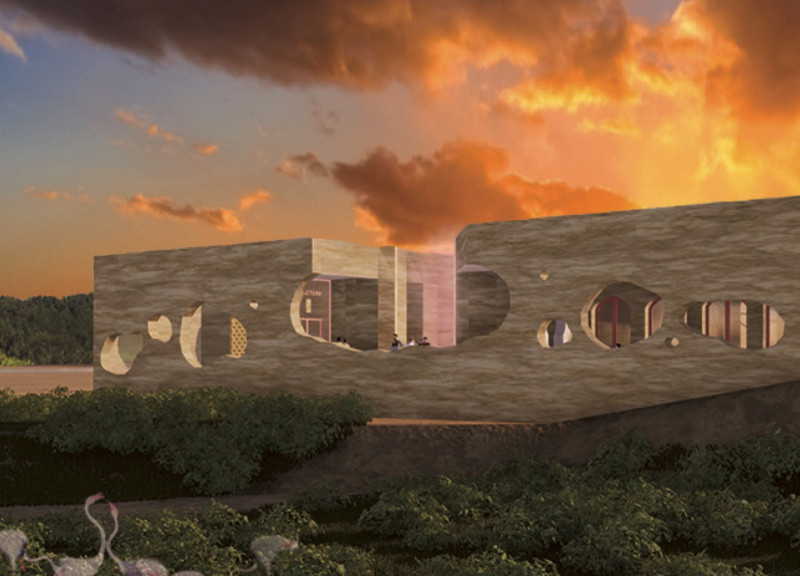5 key facts about this project
The Al Wathba Wetland Reserve Visitor Center is situated in Abu Dhabi, serving as a key entry point to an ecological area that features wetlands, fossilized sand dunes, and a variety of wildlife. The design is meant to connect visitors with this unique natural environment while emphasizing sustainability and accessibility. The center acts as a place for information and an immersive experience that highlights the importance of the wetlands, particularly the vibrant flamingo population.
Design Concept
The design concept focuses on blending architecture with the surrounding landscape. A main feature is the pink canyon, which creates a pathway for visitors that leads to a viewing area overlooking the wetlands. This design aims to enhance the relationship between the structure and its natural context, offering varied experiences as guests navigate through the space.
Accessibility and Spatial Organization
The visitor center is built with accessibility in mind, featuring ramps that allow all individuals to navigate the facility easily. These ramps include resting areas, encouraging visitors to take their time exploring. Additionally, there is a multifunctional pavilion designed in the style of traditional Barasti homes. This area can be used for various purposes, such as exhibitions and educational programs, fostering a connection to local culture.
Material Use and Sustainability
Rammed earth is the main material used in constructing the visitor center. This locally sourced material helps the building blend into the landscape and offers good thermal performance, contributing to energy efficiency. The design incorporates triple insulated glass, which is placed behind the rammed earth walls. This allows for large window openings that provide natural light and views of the wetlands, supporting the project's sustainability goals.
Architectural Details
The design includes eroded openings that offer framed views of the wetlands, bringing nature into the interior spaces. Deep window recesses enhance the building's overall look while aiding in temperature control. These architectural details encourage interaction with the landscape and highlight the intended connection between visitors and the natural environment of Al Wathba.






















































